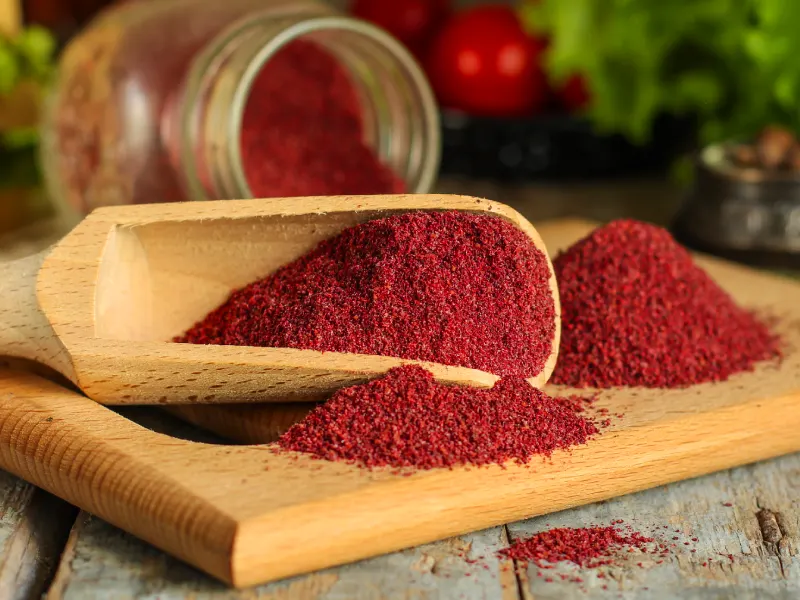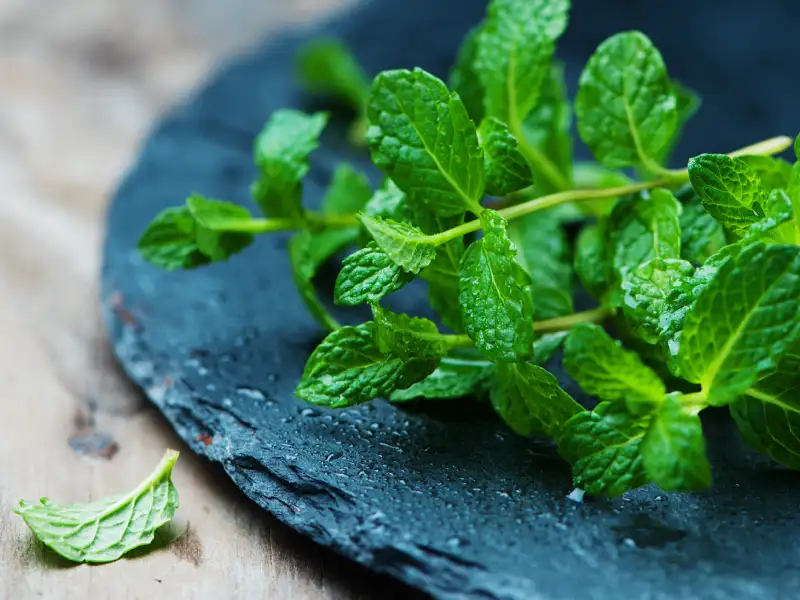Top 10 Iranian Spices & How to Use Them
Spices are an essential part of cooking because they can perfect your dishes with rich flavors and appetizing aromas. With spices, you can transform simple ingredients into complex and tasty meals, adding uniqueness and character to your dishes. Apart from enhancing the flavors, spices can boost your health since they are natural herbs like turmeric, ginger, cumin, and thyme that offer anti-inflammatory and digestive benefits.
Every country incorporates specific spices that add a distinctive savor to meals. Like any other place, Iranian dishes also make use of specialized spices that together create authentic Persian cuisine. These Iranian spices are used not only for flavoring but also for health purposes, which surely makes the dishes ideal for anyone. If you wish to prepare a nutritious Iranian-style meal, you should be well-acquainted with the most commonly used spices in Iran.
What Spices Are Used in Iran?
Some Iranian spices are popular not only in Iran but also in the Middle East. Some of them originate from Iran, while others come from far and wide. However, all these spices have found their place in Iranian cuisine as some of the most delicious, aromatic, and memorable Iranian dishes. It’s important to familiarize yourself first with the best Persian spices in order to prepare Iranian dishes practically.
We advise you to grind your spices in your kitchen rather than buying pre-ground spices, as they develop more flavor and aroma when you grind them at home. So, it’s a good idea to invest in a high-quality spice grinder or mortar. But what are the main Persian spices? Here, we will introduce you to some of the most popular and original Middle Eastern and Iranian spices.
Saffron (Persian Red Gold)
Saffron is one of the most widely used spices in Iran, obtained from the saffron flower. This red golden spice originates from eastern Iran. Saffron is known for its delicate, floral, and earthy notes, strong aroma, and for adding warm, yellow, and orange colors to the food it is used in.
This red spice is among the most expensive crops in the market and is used to color and flavor all kinds of foods, drinks, sweets, and ice creams. The Premium quality saffron has the stamen and stigma attached, which gives out the highest coloring rate among other saffrons since the stigma section, which is red, is only used as the saffron spice.
In addition to its wonderful taste, saffron furnishes your food with an attractive color and aroma. In Iranian events, saffron is an integral part of the meal. Not to mention that this spice is also a natural painkiller, improving your mood, and it also makes the skin bright and radiant.
Sumac
Sumac has a unique flavor that is often described as spicy, slightly fruity, and a bit lemon-like. It adds a distinctive flavor to foods, and you can mostly taste sumac in dishes such as Persian kebabs.
The fruit of sumac is obtained from a mountain shrub that is located in a cluster next to each other and is used as a spice and seasoning in foods after the fruits are ground. Sumac spice is a type of Sapindales and a member of Anacardiaceae, which has a sour taste and unique healing properties.
Recent research suggests that sumac may have powerful effects on blood sugar control, heart health, disease prevention, and even pain relief. Like other medicinal herbs and spices, sumac is low in calories but high in vitamin C, making it an important antioxidant to help fight diseases and optimize your health.
In particular, sumac is rich in polyphenols and flavonoids, such as gallic acid, methyl gallate, camphor, and quercetin; it also contains tannins, which act as antioxidants and may have anti-cancer properties.
True Cardamom
Known as cardamom in Persian, this heavenly-smelling spice is commonly used in sweets and desserts. The intensely sweet and warm scent of cardamom has a magical aroma that can take a simple cookie to a new level of flavor and enjoyment.
Some Iranian desserts, such as Qottab, Baklava, and Gaz, all benefit from the aromatic properties of cardamom and are also popular in other Iranian desserts, such as saffron ice cream, saffron pudding, and Kachi. True cardamom is also used as a flavoring for tea.
Cardamom contains many vitamins that are beneficial for health. The vitamin C in cardamom is advantageous for strengthening bones and oral health in infants and children and aiding in the formation and repair of red blood cells.
Persian Hogweed – Angelica (Golpar)
Persian hogweed, or Golpar in Persian, is an aromatic plant that can be used in many dishes. Persian hogweed has many healing properties that make it one of the important medicinal plants. It is commonly used in various Persian Aush or soup dishes to elevate the taste of the ingredients.
Angelica, a plant with a long history in traditional medicine in Iran and other parts of the world, has long been used as a spice and herbal medicine. This aromatic and tasty plant, with a warm and dry nature, has many therapeutic properties that have been of interest in the past.
Turmeric
Turmeric is known to be the most widely used spice in Iran among all Iranian spices. In fact, the combination of turmeric and fried onion is the mainstay of most Iranian dishes. Iranians have been consuming turmeric for thousands of years for its antibacterial and antiseptic properties.
However, another key reason why Iranians use turmeric is its powerful ability to neutralize the unpleasant odors of meat and eggs in foods. The spice itself doesn’t have a strong flavor or aroma, but if you forget to add it when cooking Iranian food, you’ll find that something is missing from the dish.
Cinnamon
Cinnamon is a famous Iranian spice that adds a wonderful warmth, flavor, and sweetness to various Iranian dishes. Commonly used as cinnamon powder in Iranian cooking, cinnamon is a key spice in dishes such as Abgoosht, Gheimeh, Baghali Polo, and Sholezard. It is also very common in Iran to add cinnamon sticks to tea to enhance the flavor and aroma.
This fragrant spice is the most widely consumed ingredient in Iran. Cinnamon can also help improve digestion, alleviate muscle pain, and reduce bloating.
Black & Green Cumin
Black cumin is a popular and highly nutritious spice used in Iranian cuisine. While it is not often used in most recipes, it is very common in traditional Iranian medicine. Both green and black cumin seeds and cumin powder are used in dishes such as cumin rice and sometimes even as a seasoning for breakfast cheese.
In traditional Iranian medicine, many spices and herbs are used to prepare a liquid called “Arak,” which is distilled with water. This scented Iranian spice also provides many uses as a traditional medicine. Cumin contains high amounts of fiber and can help with weight loss by reducing appetite and increasing metabolism.
Thyme
Thyme is one of the most favored and widely used medicinal plants, famous for its unique properties all over the world, including Iran. You can add thyme to numerous dishes such as Ghormeh Sabzi, chicken, and other famous Persian stews.
In addition to its use as a savory spice in cooking, thyme has a special place in traditional and modern medicine due to its active compounds, such as thymol and carvacrol.
Thyme’s antiseptic, anti-inflammatory, and antioxidant properties have made it a natural treatment for problems such as respiratory infections, digestive disorders, menstrual cramps, and maintaining oral and dental hygiene.
Coriander Seeds
Coriander seeds are different from coriander or cilantro. Cilantro is the leaves of a plant commonly used in Iranian cooking, known for its light, citrusy flavor that becomes very crunchy when cooked. Many people ignore coriander seeds; however, these seeds offer many nutritional and medicinal properties that have been used for centuries in the traditional medicine of many countries, especially Iran.
When used in ground or powdered form, coriander seeds add subtle spice and bitterness along with a strong aroma to many Iranian soups and stews, and the powder can also be used as part of a meat marinade.
Mint
Mint has a very pleasant fragrance, but as a neutral taste, it can also taste a bit bitter. Whether it’s fresh mint or dried, this scented herb is used in a large variety of Persian drinks, dishes, and salads such as Aush Reshteh, Shirazi Salad, Borani, Persian Cucumber Yogurt (Abdoogh Khiar), Doogh, and more Persian side dishes.
One of the most important properties of mint is its anti-nausea properties. This plant is used to reduce headaches and digestive problems, and relieve muscle pain and respiratory infections. Mint can also be a cooling and disinfectant for the mouth and relieve mouth and gum infections.
Final Word
Each cuisine has its signature spice blends, reflecting traditions and regional identities. Without spices, food would be dull, lacking the vibrancy that makes each bite an experience. Persian cuisine is known for its rich and aromatic flavors due to a variety of unique spices. Iranians also combine several of these spices to create a balanced and fragrant seasoning perfect for rice dishes, stews, and kebabs. These spices create a unique combination of warm, citrusy, and floral notes that enhance the natural taste of your ingredients.
Are you planning to travel to Iran and looking for an Iran Travel Agency? Check out our Iran tours and Iran food tour.












Leave a Reply
Want to join the discussion?Feel free to contribute!